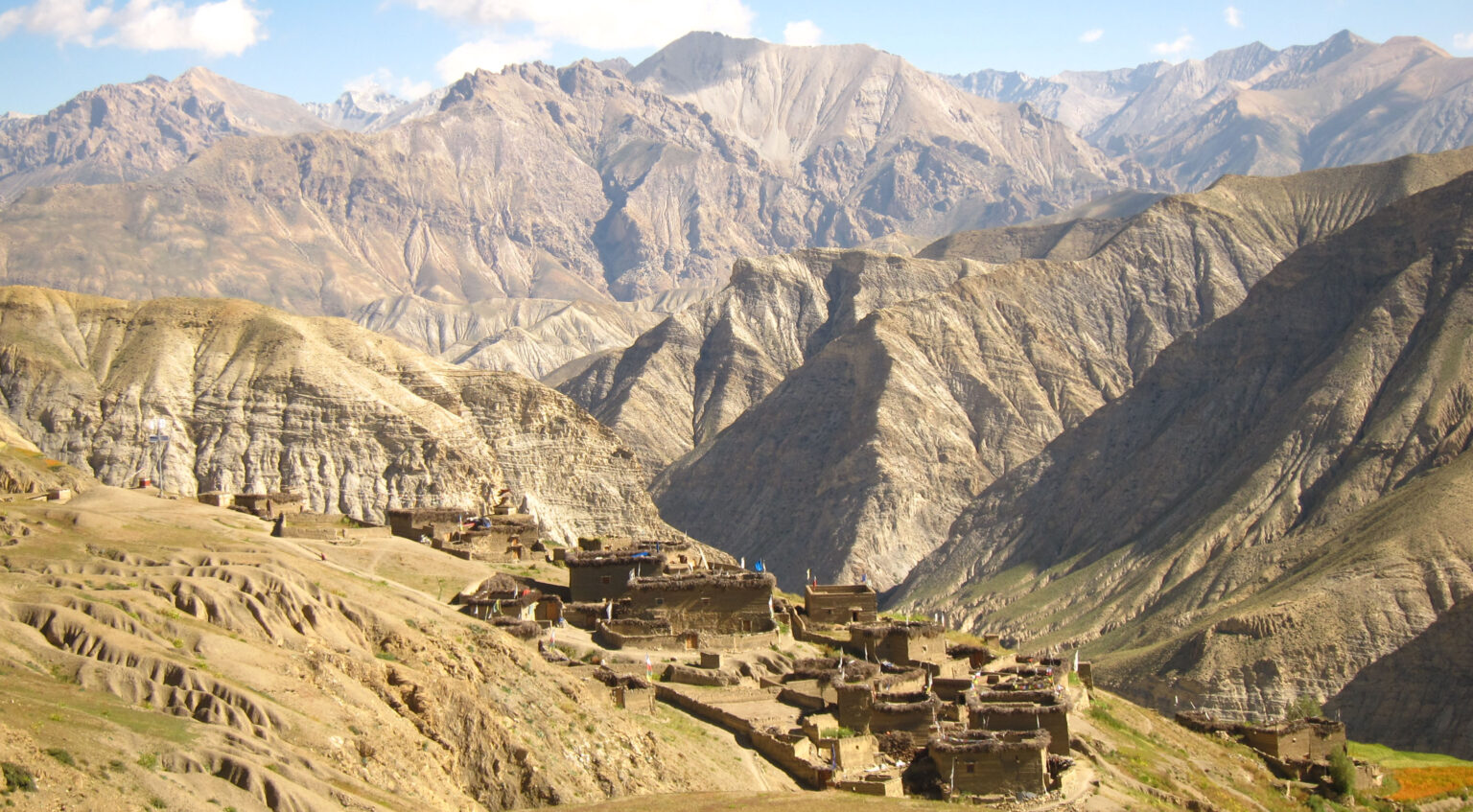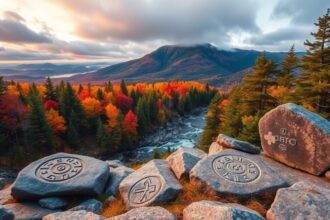Upper Dolpo Trek nestled in the far northwest of Nepal, is one of the most incredible treks in the Himalayas. The trek is renowned for its complex blend of large areas of wilderness, stunning scenery, and culturally vibrant life that has been present for centuries. In contrast to most of Nepal’s readily accessible trekking routes, Upper Dolpo is still quite off the beaten path having been opened to trekkers in 1989 and still being under permit regulations that severely limit the number of trekkers who enter the area.
As a result of this isolationism, the people of Upper Dolpo have been able to preserve their unique ways of life, customs, language, and traditions that have been little changed over the centuries. As trekkers traverse the blanketing plateaus and arid valleys of high altitude while traversing high passes along the route from the turquoise depth of Phoksundo Lake to deep canyons, wind-swept plateaus, and high mountains including the snow-capped peaks of Dhaulagiri and Kanjirowa provides unique opportunities for inspiration.
Upper Dolpo’s diversity is equally impressive, with occasional sightings of blue sheep, snow leopards, and Himalayan wildlife in the pristine section of Shey Phoksundo National Park. But most distinguishing are the cultural encounters: such ancient monasteries as Shey Gompa, vibrant festivals, and the generosity of the Dolpali, whose semi-nomadic existence and religious fervor give every village an aura of timelessness and quality inspiration. For trekkers looking for a unique travel experience off the beaten path, the Upper Dolpo Trek offers a meaningful physical challenge with immersion into one of the untouched Himalayan landscapes and living cultural heritage.
The ancient Tibetan-influenced culture of the Dolpo region
Dolpo region is well known for its Tibetan-influenced culture, which is preserved due to geographical remoteness and limited exposure to the outside world. The indigenous people of Upper Dolpo, the Dolpalis, are mostly of Tibetan ancestry with closely related Tibetan dialects—Khaam and Dolpo. The traditions, beliefs, and life of the Dolpalis are structures infused with both Tibetan Buddhism and ancient Bon tradition. The Nepali Dolpo monasteries-gompas like old Shey Gompa and Saldang village are religious and cultural epics where centuries of teachings, rituals, and paintings are transmitted.
Religious life is prevalent, visible, and alive in Dolpo with Chortens, mani walls with prayers, and fluttering prayer flags. Festivals such as the Shey Gompa Festival and Phoksundo Festivals are the major events that foster community and cultural identities with mask dances, community prayers, and traditional music. Monasteries are sacred places of worship, but also valuable containers for priceless and rare manuscripts, thangka art, and oral traditions that have been a part of Dolpo society and culture for centuries preserving its uniqueness and ancient heritage.
The Dolpo people are semi-nomadic and practice transhumance, moving with their livestock from high-altitude summer pastures to lower valleys in the winter. Their pastoral life is closely tied to nature’s rhythms and spirituality believing that land and mountains are sacred. Despite the challenges caused by the region’s harsh climate and rugged terrain, the people of Dolpo have preserved a rich cultural tradition that provides an insight into an ancient Tibetan world that has mostly remained classic in the heart of the Himalayas.
Scenic beauty
Upper Dolpo is one of the most beautiful places on earth, containing the deepest lake of Nepal, barren landscapes, and towering mountains. The stunning shimmering turquoise color of Shey Phoksundo Lake (3,600 meters) changes hue throughout the day and is surrounded by towering cliffs and snowy peaks.
The landscapes of Upper Dolpo are defined by their barren semi-arid character. These lands are profoundly different from the lush green valleys found in major of the trek in Nepal. Also, this area is highly influenced by the northern rain shadow of the majestic Himalayas, resulting in barren plateaus, rocky outcrops, and high passes with glaring expanses broken by patches of green pastures and juniper forests. This barren region is mostly natural because of its isolation and the limitations of modern-day amenities.
The stretching area is surrounded by stunning peaks of the Himalayas, including the Dhaulagiri and Kanjirowa ranges. Trekking through Upper Dolpo over a high-elevation trail provides views of these beautiful white tops, particularly majestic from lofty mountain passes like Kang La and Saldang La. This pristine land has waterfalls, deep gorges, secret valleys, and natural calm. The Upper Dolpo provides trekkers with an exceptional visual and emotional experience because of its soaring high lakes, diverse landscapes, barren beauty, and towering giant mountains.
Remote lifestyle and interaction with local communities
One of the distinctive features of the trek is the isolated way of life. The small villages revolve around traditional ways of living is influenced by the desert-like terrane and mountain passes. In addition to engaging in seasonal migration with their cattle, the locals depend on subsistence farming and animal husbandry. The villagers spend the winter months on lower valley pastures and relocate their animals to high-altitude grazing pastures in the summer. Due to the lack of modern infrastructure, life is built around nature without any distractions of modernity.
Another unique aspect of the Upper Dolpo trip is the interaction with locals which offers a genuine understanding of Tibetan-style culture and resilient way of life. Trekkers pass the remote settlements of Saldang and Ringmo which are home to stone and mud homes and historic monasteries that link social and artistic activity with spiritual practice. In addition to being invited to see, trekkers can participate in the daily activities of locals such as cooking, herding yaks, or producing string.
The remoteness of Upper Dolpo maintains the traditional customs and practices of the area. The Bon and Tibetan Buddhist religions are widely practiced with festivals, ceremonies, and prayer flags saturating everyday life with spiritual significance. Trekking Upper Dolpo is a cultural adventure and trekking challenge because every encounter provides insight into locals’ customs and bonds to the land. Trekking Upper Dolpo is unparalleled in the Himalayas through its remoteness, intact culture, and genuine hospitality.
Importance of Shey Phoksundo Lake and surrounding wildlife
Shey Phoksundo Lake, the deepest lake and second largest lake in Nepal, located at the heart of the Upper Dolpo trek is celebrated for its striking turquoise color and untouched alpine setting. Shey Phoksundo Lake located in Shey Phoksundo National Park is a combination of natural beauty, biodiversity, and cultural significance.
Upper Dolpo region is a hotspot of various flora and fauna including the snow leopard, musk deer, blue sheep, and Tibetan wolf. The national park is the home of over 200 bird species, including the Himalayan Monal and Lammergeyer. There are various flora in the park including alpine meadows and bogs, which provide habitat for specialized plants and medicinal herbs which attracts wildlife enthusiasts.
The nearby Ringmo retains traditional Tibetan culture, while the ancient monasteries of Shey Gompa and Thashung Gompa reflect the region’s Buddhist and Bon religions. Shey Phoksundo Lake and its wildlife are not only an important ecological area for conservation but also for continuously feeding into the spiritual and cultural tapestry of Upper Dolpo.
Flora, fauna, and wildlife conservation efforts
The Upper Dolpo trek revolves around the Shey Phoksundo National Park’s vibrant ecosystem with high-altitude plants and rare creatures. The biodiversity is huge ranging from lower-altitude pine forests and juniper shrub forests to alpine meadows and arid plateaus. The area is a shelter for medicinal herbs like Yarchagumba, juniper shrubs, and robust alpine grasses that feed both wildlife and traditional peoples.
Fauna from this area includes endangered animals such as the snow leopard, Himalayan blue sheep, musk deer, Tibetan wolf, and more than 190 bird species including the Himalayan griffon, golden eagle, and Lammergeier. In Upper Dolpo, efforts to conserve ecosystems attempt to strike a balance between ecological protection and the livelihood activities of people. There are community-based strategies such as training villagers to become wildlife monitors or using new sustainable eco-tourism techniques. The national park is relatively remote compared with other parks in Nepal so the stress on the environment is less. However, the remote location also limits enforcement and opportunities for research on species.
Traditional ecological practices such as rotational grazing and limited harvesting are practiced by the locals to conserve the ecosystem. As explored, there are major challenges introduced by climate change melting glaciers, and illegal wildlife trade that threaten long-term ecological stability. Increasingly, NGOs and governmental work with project funding are collaborating to raise awareness, fund wildlife anti-poaching units, and include indigenous knowledge into conservation goals and practices to preserve Upper Dolpo as a cultural and ecological zone of importance as part of a Himalayan sanctuary.
Conclusion
The Upper Dolpo Trek in Nepal provides unique experiences to trekkers as it combines ancient Tibetan-influenced culture and unblemished wilderness. Trekkers will experience sustainable ways of living, deep spiritual teachings, clear lakes, highlands, and spectacular views of Himalayan peaks. The sacred remoteness of Upper Dolpo has allowed Upper Dolpo residents to keep their distance from modern ventures. In addition to all of this, the trekkers experience the friendly hospitality of locals that is rarely experienced anywhere else in the world. Upper Dolpo is a trek for people looking for cultural experiences, solitude, and outdoor beauty. The upper Dolpo trek will be a memorable experience that will stay with you long after the last adventure.














